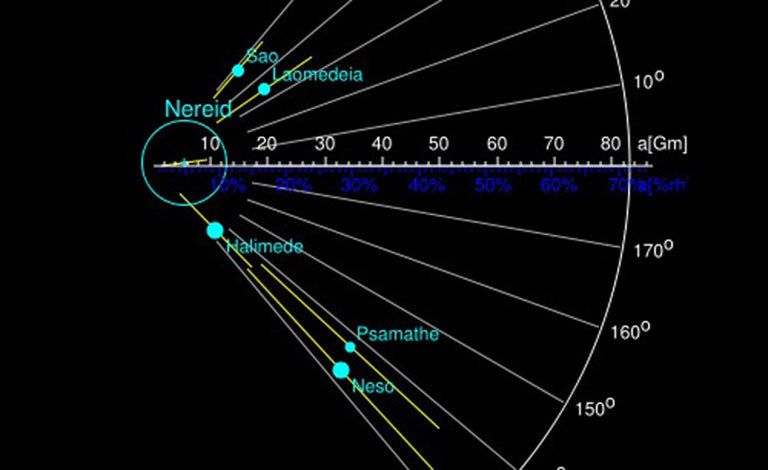Laomedeia

Laomedeia was discovered Aug. 13, 2002 by Matthew J. Holman, John J. Kavelaars, Tommy Grav, Wesley C. Fraser, and Dan Milisavljevic using images taken by the 4.0-meter Blanco telescope at the Cerro Tololo Inter-American Observatory in Chile and the 3.6-meter Canada-France-Hawaii Telescope in Hawaii. Multiple images were digitally combined until stars appeared as streaks, while the moons appeared as points of light.
Laomedeia, Sao and Halimede were discovered through the use of Earth-based telescopes—this was the first time a Neptunian moon discovery had occurred by telescope since the discovery of Nereid in 1949 by Gerard Kuiper.
Laomedeia is one of three tiny moons ranging in size from 18 to 24 miles (30 to 40 kilometers) discovered in 2002. The other moons discovered were Sao and Halimede.) The moons are so distant and so small they are about 100 million times fainter than can be seen with the unaided eye.
The moons were missed by the Voyager 2 spacecraft in 1989 because they are so faint and distant from Neptune.
Laomedeia is considered an irregular satellite because of its distant, eccentric orbit around Neptune. Like most irregular satellites of the giant planets in our outer solar system, Laomedeia most likely formed after a collision between a larger moon and a comet or an asteroid. Laomedeia and Sao have prograde orbits, which means they orbit in the same direction as Neptune's rotation. Halimede has a retrograde orbit, which means Halimede orbits in the opposite direction of Neptune's rotation.
Very little is known about Laomedeia. Scientists are trying to learn more about it and its irregular sisters because they offer a glimpse of the conditions at the time the planets in our solar system were forming billions of years ago.
Irregular satellites are named for the Nereids, daughters of Nereus and Doris and the attendants of Neptune. Laomedeia is named for one of the Nereids. Laomedeia was originally designated as S/2002 N 3.




